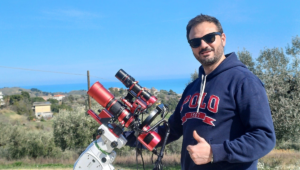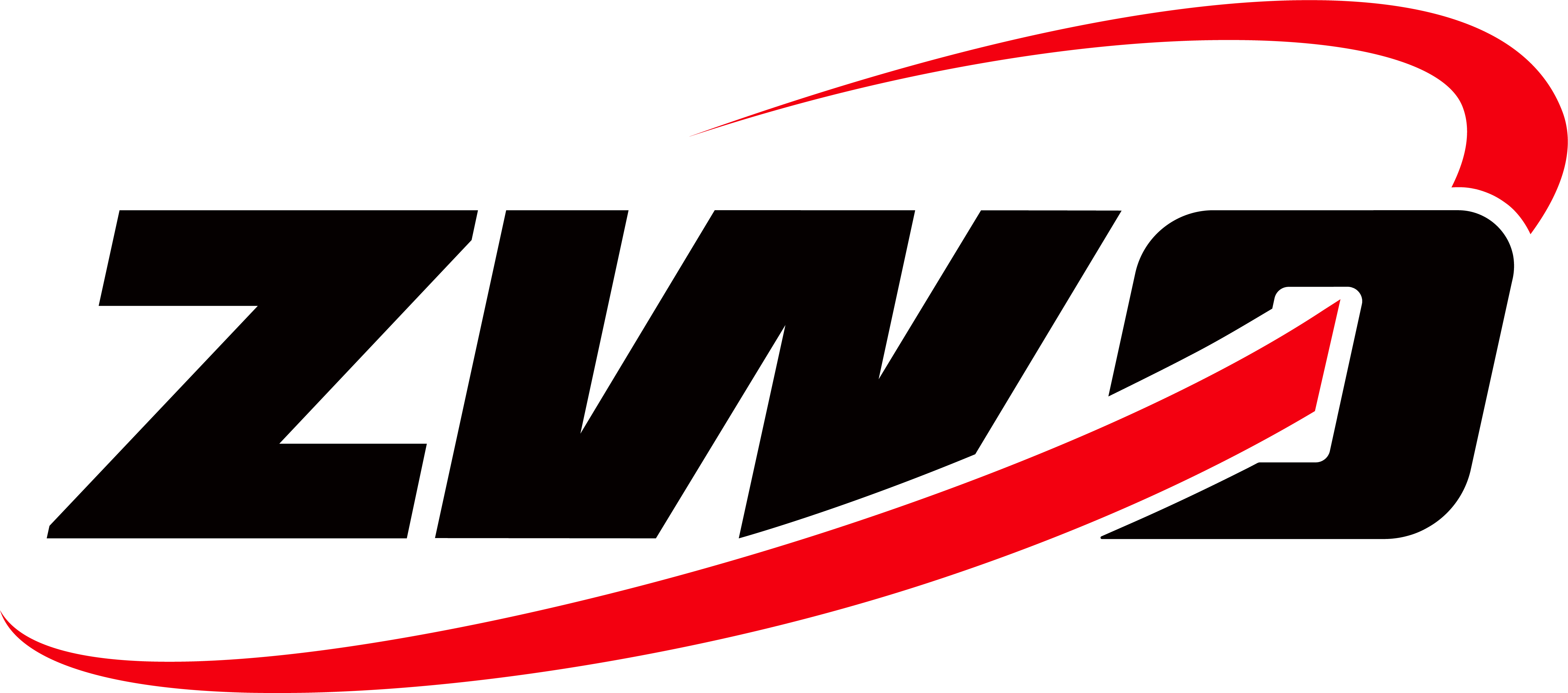Andrei Gusan is the winner of ZWO 2020 ASIWEEK #36. His work “Cygnus Loop” is one of the most beautiful images we’ve seen on this target. To know how he captured the image and how he started astrophotography, here we made an interview with this great astrophotographer:
Q1: At first, congratulation that your nice image won #ASIWEEK. Can you introduce yourself to us?
Thank you very much, it’s an honor! My name is Andrei Gusan, I’m 36 years old and live in a small village in the heart of Transylvania, Romania – that’s right, the home of Dracula, boo! 🙂 UX Designer & Developer, father and husband during the day and amateur astrophotographer by night.

Q2: When did you start astrophotography and why?
It all started in the summer of 2018 with the Opposition of Mars. I didn’t know anything about telescopes, but I got a 6” Newtonian for the kids – who are passionate about space, a SkyWatcher EQ3 mount and a few eyepieces. I will never forget the rush I felt the first time I saw the moon! After a few moments I felt that I needed to take a picture to capture the moment. And that was when I started to go down the Rabbit Hole. The next few weeks were very tough, I began learning the basics (balance, polar alignment etc) and chased deep sky targets. Ended up learning the techniques on Andromeda Galaxy. After that I quickly started upgrading the gear and tried a few different things until I realized what I needed.
Q3: Where do you think astrophotography’s charm lies in compared to other types of photography?
Astrophotography is unique. And tough. Very tough! Unlike other types of photography, in astrophotography you need to apply a lot of science, not just dial the camera on auto and press the shutter button. It’s unforgivable, no matter how big your bank account 🙂 The night sky is like a time portal that allows us to look back in time – thousands and even millions years with the equipment available to amateurs. And I want to be a witness to all that!

Rosette Nebula HOO. Equipment: SW ED80 + ASI1600MM Pro + HEQ5 Pro. Integration: 8.2 hours.
Q4: What equipment do you use? Why did you choose them?
Currently, my main setup is a wide-field setup. I wanted a nice flat field up to 300mm focal length so I got the RedCat51 Petzval design APO and paired it with a ZWO ASI1600MM Pro cooled mono camera. It’s a perfect match! Between the telescope and camera, I have an 8 position ZWO 1.25” filter wheel and inside Astronomik LRGB and narrowband filters. For perfect focus, I use AF3 from Deepsky Dad. The small black with a bit of red accent ZWO mini guide scope and the ZWO ASI120MM mini matches in a fashion way with the rest of the gear – the classic red-black combination. It’s true, you don’t see the gear during the night, but I absolutely love to see them paring during the day 🙂 All these are carried by an old HEQ5 mount that I got and hyper tuned it myself last year.
I’m absolutely in love with the wide field, but apertures matter, so my plan is to have a secondary setup of a 8” or 10” fast f4 Newtonian for the next galaxy season.

North America and the Pelican Nebula. Equipment: Williams Optics RedCat 51 + ASI1600MM Pro + HEQ5 Pro. Integration: 11.3 hours.
Q5: Do you have a personal observatory? Any images that can share with us?
Yes! This is one of the best investments that an astrophotographer can make! Last summer I built a 3/2m roll-off shed. I feel that I’m cheating with the permanent setup, but it saves me a lot of time. I just need to power on the equipment and I’m ready to roll. It’s literally 5 minutes! The location is OK, not great, but it works so far for me as I live in the rural area with 4 on Bortle scale.

Q6: How did you manage your winning picture the Cygnus Loop? Was the whole process rather smooth to you?
With the setup stable and performant now, it was really down to post-processing. I’m in the learning phase and I just started to scratch the surface, but I’m happy with my progress so far. I spent almost two months exclusively on this target. Was a record for me with more than 17 hours of hand-picked exposure time. The total integration time was more than 22 hours but I decided to dump some frames that didn’t help (airplane trails, bad seeing, a few clouds etc). The post-process was a bit challenging because I wanted to highlight the very faint upper part of Cygnus Loop that unites the two large nebulas. I know there are more details there, but I had to move on eventually. Will definitely revisit this area next year to integrate more data.

Cygnus Loop – A Stellar Death. Equipment: Williams Optics RedCat 51 + ASI1600MM Pro + HEQ5 Pro. Integration: 17.1 hours.
Q7: Do you think your skills have been improved a lot since the first time you tried taking an astro photo?
Yes, definitely, but as I said, there is room for improvement. You have to take it step by step. In the basic learning process I choose an easy target, The Great Andromeda Galaxy. Here’s my evolution so far:

The 2018 versions were made with the 6” Newtonian and a Nikon DSLR and the 2019 version with SkyWatcher 80ED and a stock Canon DSLR.
Watch out for the 2020 version!
Q8: Do you ever feel frustrated since you were into this hobby? For what and how did you get over it?
Right now the only frustration I have is the bad weather and apparently new gear is a cloud generator 🙂 When I learned the basics I felt a lot of frustration because nothing worked and, because I learned everything on my own from the Internet, sometimes I didn’t know what was my problem and why something didn’t work. Because of this it was difficult to find an answer without knowing where to look. This is why I encourage everyone to reach out from local astronomy groups or clubs.
Q9: Do you have a favorite target in space?
When I choose my next target I search online for details about the subject because I want to know what I’m looking at and every time I realise that I absolutely love the Space! Galaxies, nebulas and globular clusters, even our neighbours in our Solar System the Planets and Moons. I don’t have too much experience so far and I don’t think I have a favorite target, but usually I feel attraction for the large star formation nebulas. Our Lady Moon has a special place in my heart.

The Elephant’s Trunk Nebula. Equipment: Williams Optics RedCat 51 + ASI1600MM Pro + HEQ5 Pro. Integration: 23.5 hours.
Q10: What’s your astrophotography goals this year? Did you already accomplish them?
I’m very interested in Integrated Flux Nebula (IFN) regions. Currently I’m working on a wide field on Iris Nebula as there is a lot of IFN there. I managed to acquire the data so it’s all about post-processing now and it looks great so far. I’m also preparing for the winter targets, in particular Rosette Nebula and, of course, the objects from the Orion constellation, the Orion and Horse Nebule.
Q11: How did you know ZWO and get your first ASI camera?
There is a lot of hype around ZWO products in astrophotography communities so it was relatively easy to choose the brand. You guys rock! Keep up the good work! My only dilemma was around the idea of mono or color camera. So I got two. The ASI294MC Pro One-Shot-Color and ASI1600MM Pro mono. The OSC was fun to use, but wasn’t for me as I was looking for more faint details and I ended up keeping only the ASI1600MM Pro mono. It was very challenging at the beginning because of the complexity around acquisition with different filters, different focus points between filters and of course the integration. But definitely worth it. As technology evolves very fast, I see great results with the new OSC cameras and narrowband filters so I might get one OSC in the future.

M51 Whirlpool Galaxy. Equipment: SW ED80 + ASI1600MM Pro + HEQ5 Pro. Integration: 17.9 hours.
Q12: What do you care most when buying a dedicated astro camera?
At the beginning as I didn’t know too much about cameras I went on the community hand and what others were using. Now that I’m beginning to understand the technical side better, after the brand, the first thing I’m looking at is the pixel size to match with my setup. As the read noise is very low on all models, next is the full well capacity because I’m absolutely obsessed with this aspect because I tend to use long exposures and stars get very quickly oversaturated.
Q13: One last question: what feedback or suggestions would you like to tell us?
I would really, REALLY like to see a new camera similar to the new full-frame ASI6200MM Pro but on a smaller 4/3 chip size, hopefully more affordable. I’m not sure if there is a sensor like that on the market, but I’m particularly interested to have a better dynamic range and larger full depth capacity with 14 stops. The two USB hubs on all cameras are great, one more port would be even better (for guiding camera, filter wheel and focuser) and also I believe it’s time to upgrade the USB-B type to the USB-C type output.
















2 Comments
Gary P
Amazing work Andrei, the photography and your words are all very inspiring. Keep it up and I, as I’m sure we all do look forward to what comes next for you. All the best buddy and good luck 🙂
ZWO.Moson
Thank you for supporting us!